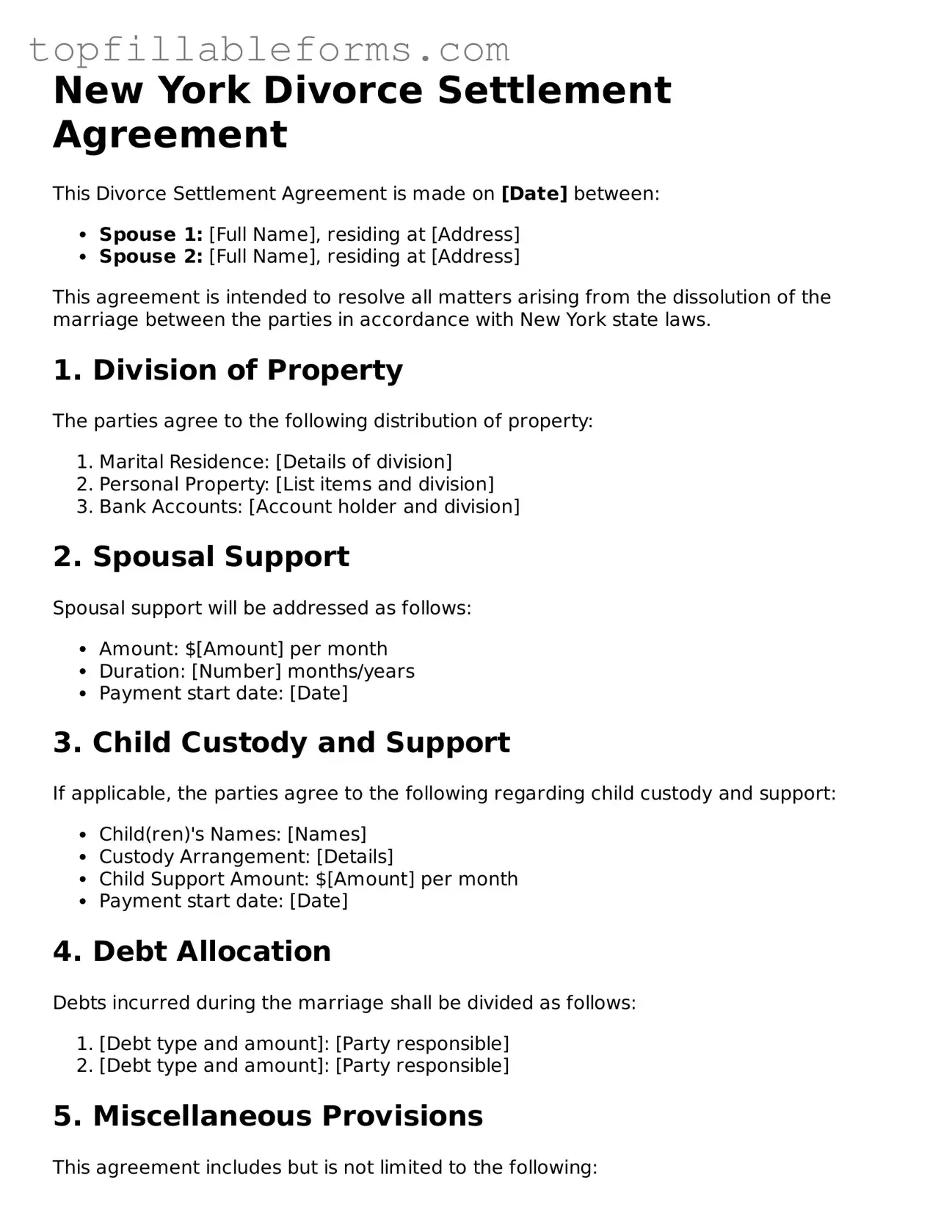New York Divorce Settlement Agreement
This Divorce Settlement Agreement is made on [Date] between:
- Spouse 1: [Full Name], residing at [Address]
- Spouse 2: [Full Name], residing at [Address]
This agreement is intended to resolve all matters arising from the dissolution of the marriage between the parties in accordance with New York state laws.
1. Division of Property
The parties agree to the following distribution of property:
- Marital Residence: [Details of division]
- Personal Property: [List items and division]
- Bank Accounts: [Account holder and division]
2. Spousal Support
Spousal support will be addressed as follows:
- Amount: $[Amount] per month
- Duration: [Number] months/years
- Payment start date: [Date]
3. Child Custody and Support
If applicable, the parties agree to the following regarding child custody and support:
- Child(ren)'s Names: [Names]
- Custody Arrangement: [Details]
- Child Support Amount: $[Amount] per month
- Payment start date: [Date]
4. Debt Allocation
Debts incurred during the marriage shall be divided as follows:
- [Debt type and amount]: [Party responsible]
- [Debt type and amount]: [Party responsible]
5. Miscellaneous Provisions
This agreement includes but is not limited to the following:
- Modification of this agreement must be in writing and signed by both parties.
- The parties agree to comply with all terms outlined above.
Both parties acknowledge they have had the opportunity to seek independent legal advice regarding this agreement.
IN WITNESS WHEREOF, the parties have executed this Divorce Settlement Agreement as of the date first above written.
Spouse 1 Signature: _______________________
Date: _______________________
Spouse 2 Signature: _______________________
Date: _______________________
